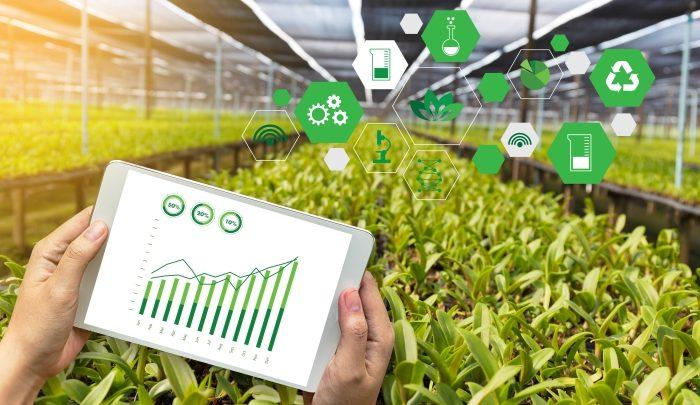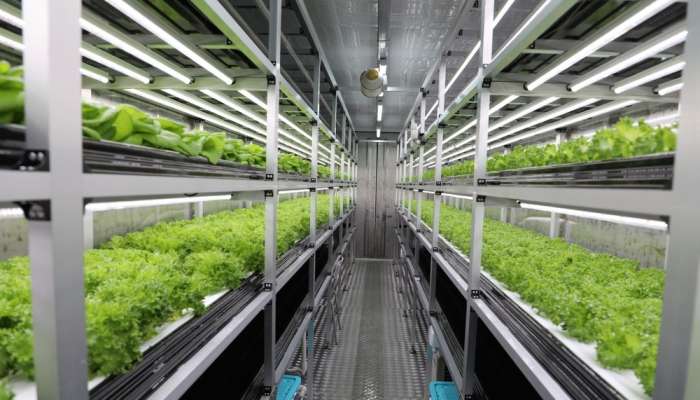Introduction
Agriculture in Oman has always been more than just an economic activity. It is deeply rooted in the heritage of the country, symbolizing self-reliance, food security, and a harmonious relationship with the environment. However, as population needs rise and environmental pressures intensify, the traditional methods of farming face increasing challenges. Water scarcity, soil degradation, and climate variability threaten sustainable growth. To address these hurdles, Oman is turning toward innovative solutions, and at the heart of this transformation lies the Internet of Things (IoT).
IoT has emerged as a driving force for smart agriculture in the Sultanate. By interlinking devices, sensors, and data-driven technologies, it allows farmers to make decisions with greater precision and efficiency. From water management to crop monitoring and livestock care, IoT offers a holistic approach that aligns perfectly with Oman’s vision for sustainable development. This article explores the pivotal role of IoT in Oman’s smart agriculture projects, its potential to reshape the industry, and its contribution to food security and environmental resilience.
The Need for Smart Agriculture in Oman
Oman is a country where agriculture has always been shaped by its geography. The arid climate, limited rainfall, and dependence on groundwater resources create unique challenges. Traditional farming methods, though effective in the past, are no longer sufficient to meet modern demands. Population growth has increased the pressure to secure food locally, reduce reliance on imports, and manage natural resources carefully.
In this context, smart agriculture powered by IoT is not just an option but a necessity. By combining modern technology with traditional practices, Oman can ensure higher productivity while maintaining ecological balance. The move toward smart farming also supports the broader goals of Oman Vision 2040, which emphasizes sustainability, innovation, and economic diversification.
Understanding IoT in Agriculture
IoT in agriculture refers to the use of connected devices, sensors, and digital systems to collect, transmit, and analyze real-time data. This data-driven approach provides actionable insights that help farmers optimize resources, predict outcomes, and automate processes.
For example, soil moisture sensors connected to an IoT network can measure water levels in real time. This information can then guide irrigation systems to deliver water only when and where it is needed, reducing wastage. Similarly, drones equipped with IoT-enabled cameras can monitor crop health across large fields, identifying early signs of disease or pest infestation. These examples showcase how IoT bridges the gap between traditional farming and futuristic practices.
In Oman, IoT is being integrated into various agricultural projects, with the aim of improving productivity while conserving valuable resources.

Water Management through IoT
Water scarcity is perhaps the most pressing issue in Oman’s agricultural sector. Traditional irrigation methods often lead to overuse of water, creating pressure on underground reserves. IoT solutions are addressing this problem by enabling precision irrigation.
Smart irrigation systems equipped with IoT sensors track soil moisture, humidity, and weather patterns. These systems automatically adjust water distribution based on real-time conditions, ensuring that crops receive exactly the amount of water they need. This approach not only conserves water but also enhances crop yields by preventing under- or over-irrigation.
For Oman, where every drop of water counts, IoT-driven irrigation systems are a game-changer. They allow farmers to optimize water use and extend the lifespan of vital groundwater reserves.
Crop Monitoring and Disease Detection
Crops are the backbone of agriculture, and their health directly impacts food production. IoT-powered crop monitoring systems are being deployed in Oman to ensure healthier harvests. Using sensors, drones, and satellite imagery, farmers can observe plant growth, soil nutrients, and temperature variations with precision.
One of the most valuable contributions of IoT is early disease detection. By analyzing patterns in crop data, IoT platforms can identify symptoms of pest attacks or fungal infections before they spread. Farmers receive alerts on their mobile devices, allowing them to take timely action. This minimizes losses, reduces the need for excessive pesticide use, and improves overall crop quality.
In Oman’s date palm farms, which are central to the country’s agriculture and culture, IoT plays a particularly important role. Smart monitoring systems help detect red palm weevil infestations, a major threat to palm cultivation, enabling quicker and more effective interventions.
Enhancing Livestock Management
Agriculture in Oman is not limited to crops; livestock farming also holds a significant role in rural livelihoods and food supply. IoT technologies are being introduced to improve livestock health, productivity, and welfare.
Wearable IoT devices can track vital signs of animals, monitor their movement, and even predict reproductive cycles. For example, smart collars on cattle provide farmers with insights into feeding behavior, stress levels, and disease symptoms. This data-driven monitoring allows for early veterinary intervention, reducing losses and ensuring healthier herds.
Furthermore, IoT-powered systems manage feeding schedules and optimize nutrition, leading to better growth rates and higher-quality meat and dairy products. For Oman’s livestock sector, this digital transformation strengthens food security while reducing costs for farmers.
Smart Greenhouses in Oman
Greenhouses have long been used in Oman to extend growing seasons and protect crops from harsh weather conditions. IoT takes greenhouse farming to a new level by enabling complete climate control.
IoT-connected devices monitor temperature, humidity, and light intensity inside the greenhouse. Automated systems then adjust ventilation, irrigation, and lighting to maintain optimal conditions for plant growth. This reduces human error, increases efficiency, and ensures year-round production of vegetables, fruits, and herbs.
Smart greenhouses are particularly valuable in Oman because they maximize productivity on limited land, reduce dependence on imports, and provide fresh produce to local markets.
Supply Chain and Market Connectivity
IoT’s role in agriculture extends beyond the farm. It also plays a critical role in strengthening the supply chain and connecting farmers directly to markets.
IoT-enabled tracking systems ensure transparency and traceability of produce from farm to consumer. Sensors monitor storage conditions, ensuring that fruits, vegetables, and dairy products are transported at the right temperature and humidity. This minimizes spoilage, reduces food waste, and improves consumer confidence in product quality.
By linking farmers to digital platforms, IoT also helps them access market prices, demand forecasts, and buyer networks. This empowers Omani farmers to sell their products more effectively, boosting income and reducing reliance on middlemen.

Contribution to Sustainability Goals
Oman has placed sustainability at the core of its national vision. IoT in smart agriculture directly supports these goals by conserving natural resources, reducing carbon emissions, and promoting responsible farming.
By cutting down water and pesticide use, IoT systems not only protect the environment but also make farming more eco-friendly. Renewable energy sources like solar panels are increasingly being integrated with IoT-powered farms, further enhancing sustainability.
For Oman, where environmental conservation and food security are closely linked, IoT offers a practical pathway toward achieving both.
Empowering Farmers through Training and Education
Technology alone cannot bring change; people must be empowered to use it effectively. Oman’s smart agriculture projects emphasize farmer training and education as key elements of success.
Workshops and field demonstrations help farmers understand how to use IoT devices, interpret data, and make informed decisions. Mobile applications designed in Arabic provide user-friendly interfaces, ensuring accessibility for all levels of technical knowledge.
By involving farmers in this digital journey, Oman is creating a new generation of tech-savvy agricultural entrepreneurs who are confident in blending tradition with innovation.
Challenges and the Road Ahead
Despite its immense potential, the adoption of IoT in Oman’s agriculture is not without challenges. High initial costs, limited connectivity in rural areas, and the need for technical expertise can slow down progress.
However, government support, private sector investments, and international collaborations are steadily addressing these obstacles. With continued focus on research, infrastructure, and capacity building, Oman is well-positioned to overcome these hurdles and lead the way in smart agriculture across the region.
The road ahead is one of promise and opportunity. By scaling IoT projects and making them more accessible, Oman can not only achieve food security but also export its expertise to neighboring countries.
Conclusion
The role of IoT in Oman’s smart agriculture projects is transformative. It is reshaping the way crops are grown, livestock is managed, and resources are used. By harnessing the power of connected technologies, Oman is building a future where agriculture is sustainable, productive, and resilient.
For farmers, IoT is more than just a tool it is a partner that guides them toward better yields, reduced costs, and stronger connections with markets. For the nation, it is a strategy that aligns with Vision 2040, ensuring that agriculture continues to be a pillar of cultural pride and economic growth.
As Oman embraces the digital age, IoT stands as a beacon of innovation, proving that even in the most challenging environments, technology can create hope, opportunity, and prosperity. The fields of Oman are not just being cultivated with seeds and water anymore they are being cultivated with data, intelligence, and vision.
Also Read – Strengthening Oman’s Digital Future with Strong Cybersecurity Solutions



